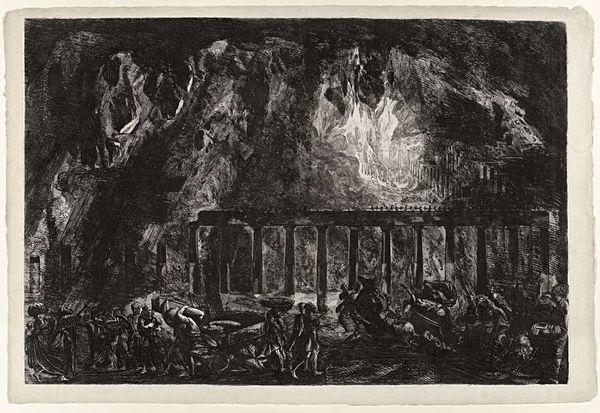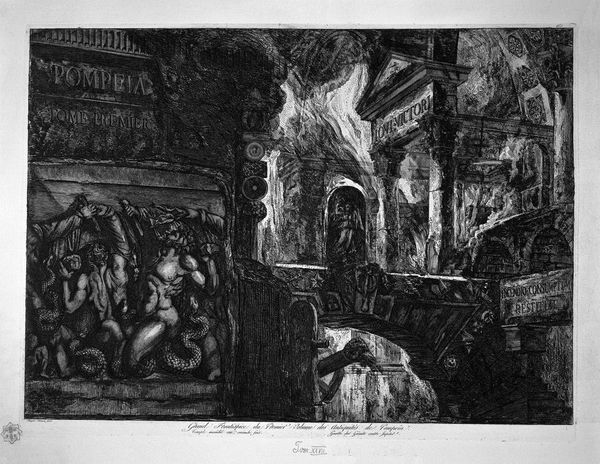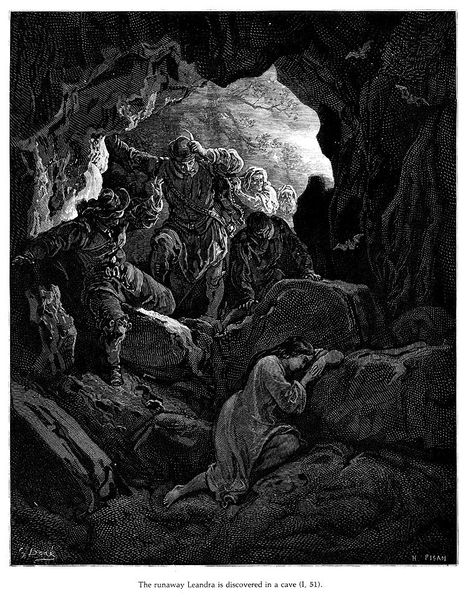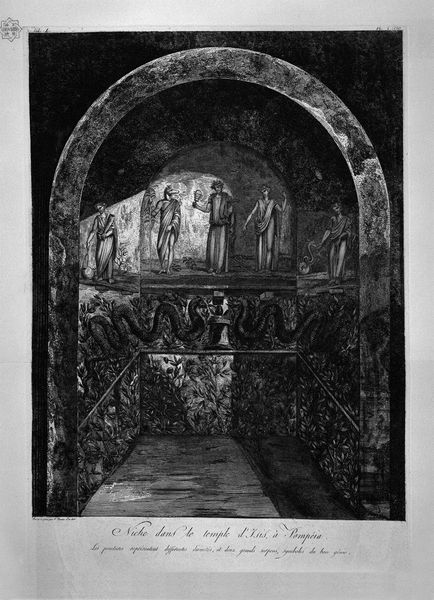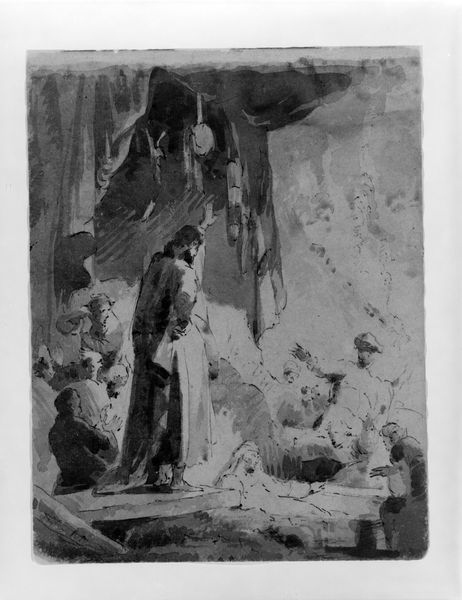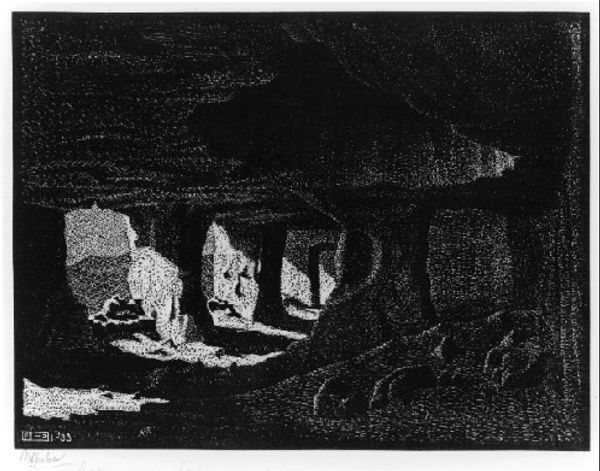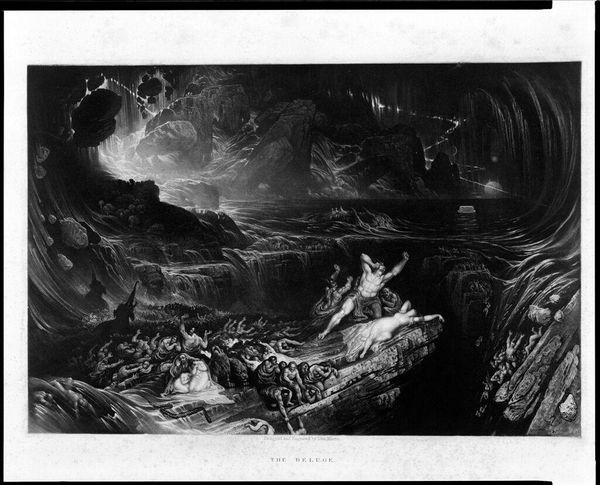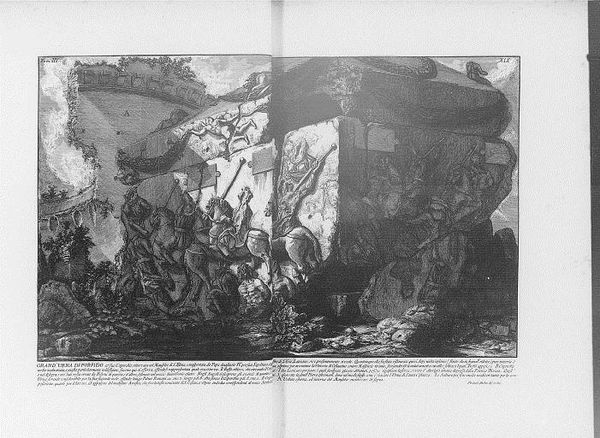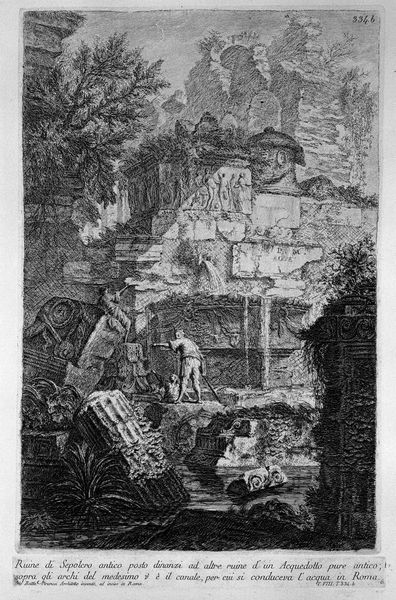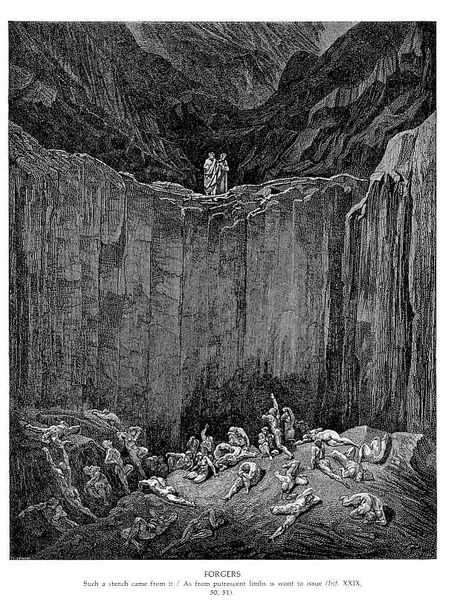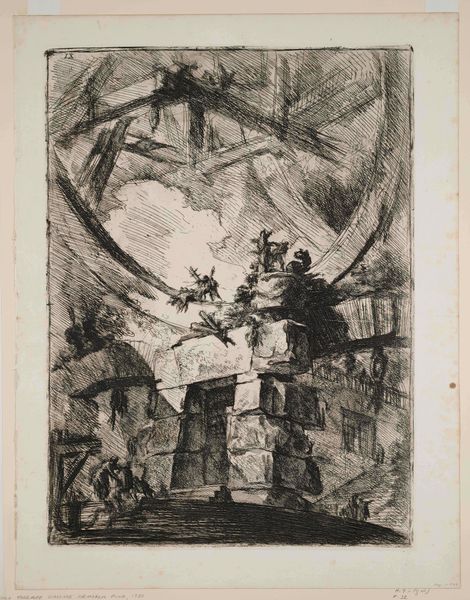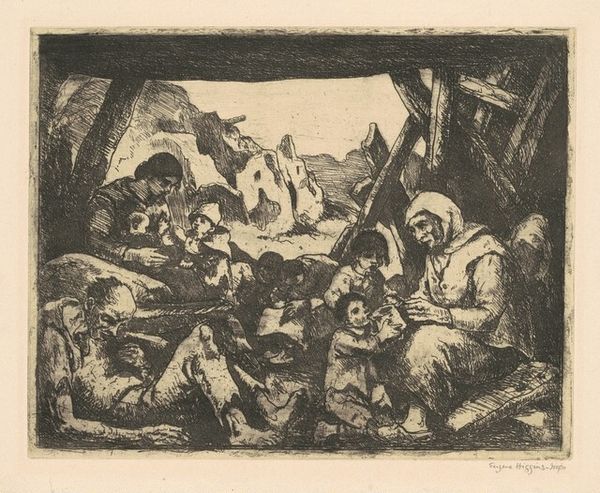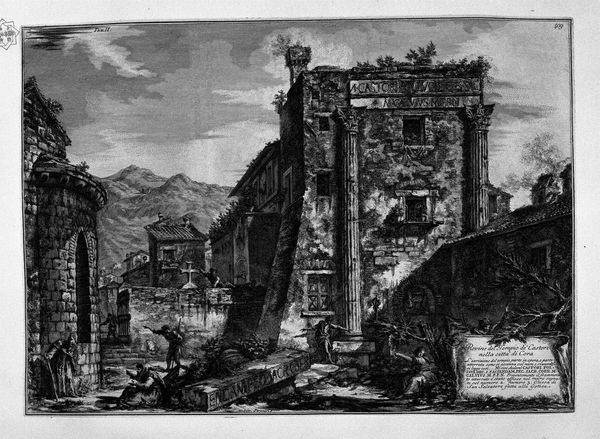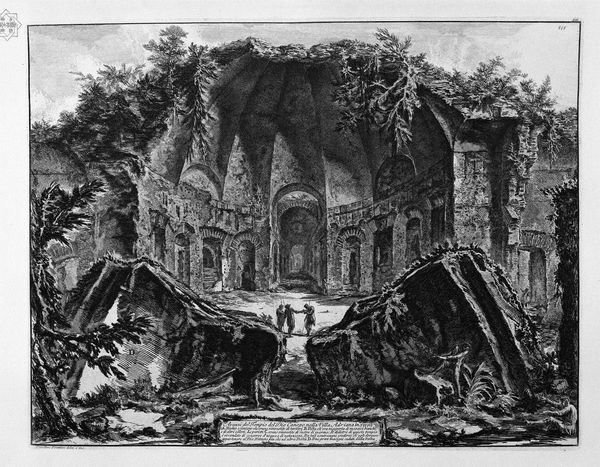
print, etching
#
baroque
# print
#
etching
#
perspective
#
romanesque
#
column
#
line
#
cityscape
#
history-painting
Copyright: Public domain
Giovanni Battista Piranesi made this etching, sometime in the 18th century, using an iron or copper plate. The image is achieved through the skilled application of acids, leaving behind incised lines that hold ink. Piranesi was a master of this demanding process, which allowed him to create dramatic compositions that are both awe-inspiring and terrifying. Note the architectural details. The ruins in this image have a remarkable amount of specificity, meticulously rendered through hatching, cross-hatching, and careful control of the etching process. This gives them an almost tactile quality. Consider how the act of creating multiple, identical impressions democratizes the image, and reflects the rise of print culture during this period. It's a departure from unique artistic creations, and speaks to a new era of reproducibility. This method of working allowed Piranesi's vision to circulate widely. In doing so, he blurred the lines between artistic creation and industrial production. By focusing on the materiality and social context, we gain a richer understanding of the artist's intent, and the broader cultural landscape of the time.
Comments
No comments
Be the first to comment and join the conversation on the ultimate creative platform.
